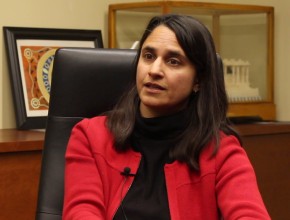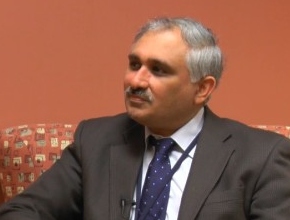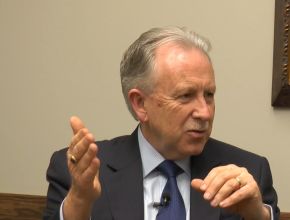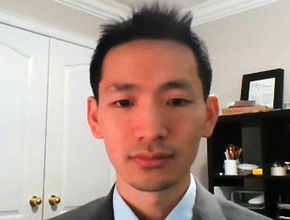Roman Jaeschke, MD: Good afternoon. Welcome to another edition of McMaster Perspective. I want to reintroduce Professor Sonia Anand. Last time we met we were talking about the COMPASS (Cardiovascular Outcomes for People Using Anticoagulation Strategies) trial, which looked into peripheral vascular disease and treatment with rivaroxaban and aspirin (see: Peripheral artery disease. Part 1: General management and COMPASS).
Interestingly, one of the main outcomes there was a major adverse limb event, which spells out MALE if I can see it correctly. That led us to another discussion that we started at the time, which is gender, gender equity, and gender contribution, both in clinical work and in research, or generally in academia. I know that you have an opinion about it and I wonder if you could share some of it with us.
Sonia Anand, MD, PhD: I would be happy to. I would first pick up on a few terms. Equity refers to fairness, equality refers to fifty-fifty, so 50% women and 50% men. You need equity, or a fair system, to achieve equality. When we talk of gender equity in medicine and in particular in academic medicine, we want to give women a fair chance at making it in terms of promotion and career advancement.
It is interesting because if we look at the percentage of women who are medical graduates in Canada, in 1980 it was about 30%. But since 2000 it has really been fifty-fifty. We graduate 50% male and 50% female candidates from medical school. If we look at who enters internal medicine, it is also about fifty-fifty, and you might think due to our own residency program that seems to be the case.
But what is being observed I would say for at least 10 years both in the US and now in Canada is that although we say the pipeline is filled, so we start with 50% [of female] medical grads and internal medicine residents, the pipeline is leaky in terms of their advancement in academic medicine. If we look at the percentage of the women who start off in academic medicine who reach full professor, it is only about 20%. And of those who then go on to be dean of a medical school across North America, it is about 15%.
A number of research groups and organizations are looking at what are the causes of the leaky pipeline. Some may be choice by women to drop out of the pipeline because they want to either pursue private practice or have families. But there seems to be other signals too that either overt or what is called unconscious bias by the current leadership prevents women’s advancement at the same rate as men.
Roman Jaeschke: Two questions come to mind and I am not sure which one will be more interesting to answer. The first one is, “What is the evidence of unconscious or conscious biases?” And the other one is, “What is proposed to do about it?”
Sonia Anand: I think we learn a lot about evidence and what works to change it from the business world. They have actually done a lot more work including randomized trials than we have in academia. Certainly, there is the Harvard University Implicit Association Test (https://implicit.harvard.edu/implicit/). We can all take it, it is available online, and you can determine just how much unconscious bias you may have. Most people will say—and certainly in our faculty—“I have no bias towards women. I hope that they do well.”
But unconscious bias refers to biases we are not aware of that may affect certain things. An example would be an interview situation. We tend to favor people who are more like us, be it what they have done in their training, what they do in their spare time—cycling versus knitting—and who we think we will get along with. If you have interview committees made up mostly of men and you have 2 candidates sitting in front of you, they are more likely to choose the one that is similar to them. Just as I may be more likely to choose a South Asian woman who likes to cross-country ski. That is an example of unconscious bias.
What has been shown in the business world is you can put in structures in place to minimize unconscious bias and make things more equitable. So rather than the usual let’s-send-you-off-for-diversity-training approach to things, structural change seems to make the biggest difference. That would be something such as blinding the curriculum vitae and taking out the person’s picture when it comes to you, using a set of structured questions in the interview, and not having what is called the poison pill thrown in at the end when someone around the table says, “Well, I think she is pretty busy, I understand she has 3 kids, so I am not sure if she can take on this job.”
Rather than leaving it to our biases, try and be as equitable as possible when we are selecting candidates. That also holds for promotion and tenure.
Roman Jaeschke: I think those views will be of interest to our international audience. Just to give a little bit more of McMaster perspective. Thank you very much, Professor Anand.
Sonia Anand: Thank you.
 English
English
 Español
Español
 українська
українська











